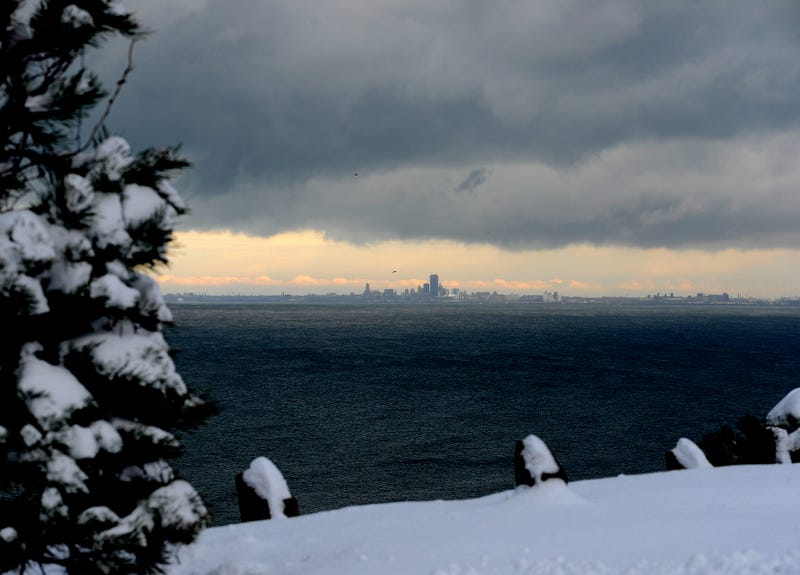
Buffalo, N.Y. (WBEN) - With a blast of arctic air arriving in Western New York this week, many local school districts are keeping close tabs on the forecast, and whether the cold conditions warrant school closures for a given day.
According to forecasters with the National Weather Service, an arctic airmass is expected to settle across the region through the middle of this week, bringing dangerously low wind chills and significant accumulations of lake effect snow to portions of Western New York.
High temperatures may struggle to get much above 5-to-15 degrees through Wednesday, while lows will fall into the negative single-digits in areas away from the lakeshore Tuesday night. Coupled with expected winds, this will result in conditions feeling in the range of -15 to -20 degrees, at times.
Mark Laurrie, superintendent at Niagara Falls City School District says school officials have been in contact with the National Weather Service, and monitoring the forecast and the expected conditions heading into the week.
"With 2,000 students who walk, we have to be very cognizant of that," said Laurrie in an interview with WBEN. "We're looking at a wind chill temperature somewhere between 15- and 20-below zero to make that call. If it reaches that for a sustained period of time, we're gonna, more than likely, close schools until we can get some warmer weather."
While Laurrie admits the cold and wind chill will likely be the determining factor with any potential school closures in Niagara Falls, he will also look into how any potential snow fall impacts the decision.
"The snow is blowing on the sidewalks, it forces young people to walk in the streets. That becomes another issue that we've got to consider, and make sure that safety is paramount," Laurrie noted.
In Southern Erie County, the snow is much more of a factor for James Bialasik, superintendent at Springville-Griffith Institute Central School District, to go along with the expected cold temperatures.
"Both in Springville and areas North like Colden and Boston, there seems to be a [snow] band sitting over our area right now. We're keeping an eye on that band to see how it materializes throughout the day, and what it's anticipated to do tomorrow as well," said Bialasik with WBEN.
With the cold temperatures and wind chill, Bialasik points to the negative-25 degrees threshold when, on paper, conditions become dangerous for students, staff, or anyone to be outside for any long durations of time.
Both Bialasik and Laurrie believe it comes down to a district-by-district decision on what factors go into conditions make it too cold for school to be open.
"Different districts have number of students that walk to school, and other districts do not. I think that's where that consideration needs to be taken into account with the overall temperature to make a decision on whether or not the district should be open when it gets really, really cold," Bialasik said.
"We talk as a group of superintendents about that threshold. Every district has a different situation," Laurrie added. "Niagara Falls, as I can speak to, has so many walkers, so many bus stops. A smaller district, where everyone's bussed, may be a little different. I think it does go district-to-district, but we talk to each other, we kind of get a common agreement that when it hits a certain level, or a goal level, I should say, we're going to probably shut down and we'll continue to monitor the next day and the next day. So those are the thresholds that we're looking for. We do talk, and we do try to collaborate as much as possible, but every district has got its specific nuances."
Last month, New York Gov. Kathy Hochul sign a bill into law that requires all school districts to develop plans to mitigate extreme heat in classrooms and support services spaces, and to establish a maximum allowable temperature to ensure the health and safety of students, faculty, and staff.
While there is no particular policy on the opposite side of the spectrum when considering extreme cold temperatures, he feels it's a matter of utilizing common sense to ensure the health and well-being of students and staff.
"When it's 15-to-20 below, and you've got the number of walkers and students who wait on a bus stop, we're not going to risk anyone's safety. We're going to make the call to close down. We're going to make the call to keep people at home and stay warm," Laurrie said. "A little added twist this week is that the high school students have regents exams, so that will take a little bit more scheduling challenges, if we choose to close. That's something that we'll handle, that won't preclude us from closing, but that 15-to-20 below zero wind chill factor is really going to be the significant mark."
Districts are hopeful to have decisions to close out early enough the evening prior to give parents and guardians the proper notification that they need.

